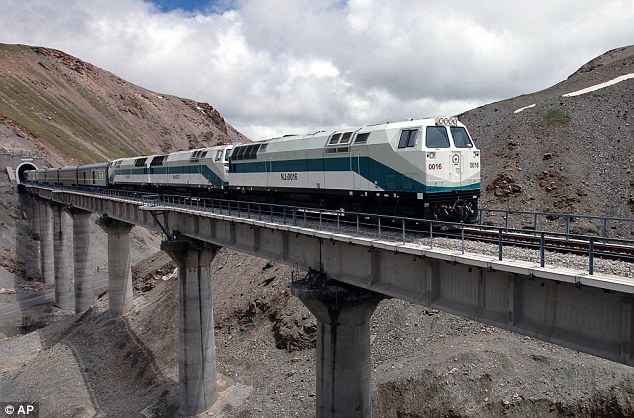
China is keen that India join the Tibetan rail network, a senior adviser to the Chinese government on Tibetan affairs told a group of visiting journalists at the end of a tour deep into Tibetan territories spread across three provinces.
“According to Chinese and Nepalese Prime Ministers’ discussions, this rail line should link all three sides,” said Zhang Yun, director of the Institute of History Studies at the government-run China Tibetology Research Center in Beijing. He was referring to the discussions between Chinese Premier Li Keqiang and his Nepalese counterpart, K.P. Oli, during the latter’s visit to China in March.
Mr. Zhang said the Chinese side is very proactive in completing the rail link. “On the Nepal side, there is strong support for the link. On the Indian side, there is one group that believes it will help improve bilateral relations. But there is a second group which argues that it will undermine India,” he pointed out.
Mr. Zhang is part of a research team that is advising the Chinese government on Tibetan affairs.
He said the railway network of China, Nepal and India would be connected soon. “It is the only way they can benefit,” he said. “It is our strong will to form synergy between the rail networks of all three countries,” he said.
The modern high-altitude rail network in Tibet that snakes through tunnels and rises to thousands of metres, is not just an engineering marvel, but a determined showpiece of China’s ambitious financial intervention in regions where Tibetans live. Tibetans are a majority in Tibet Autonomous Region (TAR), and have large settlements in a few other provinces such as Sichuan and Yunnan.
Two-digit growth
Despite the slowdown in Chinese economy in recent times, the TAR continues to record two-digit growth, thanks significantly to the massive financial intervention from Beijing. According to the Chinese vision, by 2020 no region or ethnic group should be left behind in achieving a per capita of $12,000. “Infrastructure growth will keep progressing. Farmers and herdsmen will get development, not just cities,” Mr. Zhang said, justifying the broad roads and flyovers that link up even remote Tibetan villages.
As part of its aggressive investments in Tibetan regions, China is developing rail networks, roads and airports across the region at high altitudes.
The world’s highest railway station (Tanggula), the highest civilian airport (Daocheng Yading Airport) and some of the finest roads at a few thousand metres altitude are already built across provinces where Tibetans live.
China has a two-front strategy for rail networks to Tibet and within TAR. One is to build a new rail line from TAR to the mainland, which would link Sichuan’s capital Chengdu with Lhasa. This is in addition to the existing Qinghai-Tibet rail link.
Authorities are also adding six more rail lines to the Qinghai-Tibet railway line. One of them, Lhasa to Xigaze (or Shigatse), is closer to Nepal’s border.
Last week, China flagged off its first transport service to Nepal along this line. The freight train departed from Lanzhou in Gansu province for Kathmandu. At Xigaze, the freight will be moved onto trucks.
Mr. Zhang repeated the strident stand on Dalai Lama, saying he should give up the demand for independence.